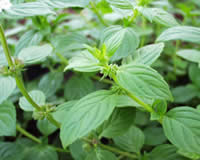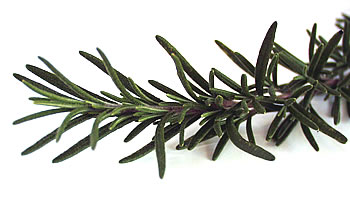Refreshing Mint
 The many varieties of mint – peppermint, chocolate, spearmint, apple, ginger, etc. – have been in use all over the world for teas, as an added flavor to many different food dishes, and for medicinal uses. In the garden, mint quickly fills in bare spots (even threatens to take over, if ignored!) with beautiful green, even variegated, foliage and delicate flowers which attract bees. As you harvest your produce and prepare your gardens for dormancy, pick your mint and put it to good use. Fresh, frozen, or dried, mint will find its way into your kitchen and bathtub.
The many varieties of mint – peppermint, chocolate, spearmint, apple, ginger, etc. – have been in use all over the world for teas, as an added flavor to many different food dishes, and for medicinal uses. In the garden, mint quickly fills in bare spots (even threatens to take over, if ignored!) with beautiful green, even variegated, foliage and delicate flowers which attract bees. As you harvest your produce and prepare your gardens for dormancy, pick your mint and put it to good use. Fresh, frozen, or dried, mint will find its way into your kitchen and bathtub.
Growing Mint
You will be surprised and the variety of mints available at your local garden center. Experiment with some unusual varieties in pots on the patio, empty patches in a border, or under your outdoor faucet. To retain their unique mint flavors/scents, don’t plant different mints in the same area. Mint likes moist soil and to be shielded from full sun. Most gardeners complain about mint taking over the garden, so plant it inside an inexpensive plastic pot or be sure to cut it back often. Use the top 3-5 leaves for cooking and the lower leaves for potpourri, baths, etc. To start new plants, cut the top 4-5 inches from an existing stem and place in a small vase of fresh water in a sunny window. It should be ready to plant in about 2 weeks with its new roots.
Drying Mint
There are several options for drying mint. Experiment and find your favorite. When dried completely, store in an airtight jar.
1. Cut stems and hang upside down in a dry, dark place.
2. Remove leaves from stems and dry on screens or trays in a dark location.
3. Remove leaves and place in the microwave on paper towels. Microwave on high for 4 minutes.
Using Mint
 Beverages
Beverages
Mint makes an excellent tea, by itself or with other teas. It is known to aid digestion, even for colicky babies. Steep dried, crushed leaves in hot (not boiling) water for true mint tea or add a sprig of fresh mint to a pot of black or green tea for a hint of mint.
French Mint Iced Tea
Steep 12 tea bags with 1/2 cup fresh mint leaves in 4 cups of water that has just boiled for 25 minutes. Add 1/2 cup freshly squeezed lemon juice, 6 oz. frozen orange juice concentrate, and 1 cup white sugar; mix well. Add water and ice to make 8 cups (2 quarts) total. Garnish with fresh mint sprigs.
Cooking with Mint
Middle Eastern food has been making good use of mint for many years. Follow its lead and add chopped mint before serving vegetables such as peas, carrots, and potatoes. You can add chopped mint to softened butter for a unique muffin spread. Sprinkle chopped mint on top of cut honeydew melon and canteloupe for a refreshing taste.
Tabouleh with Chickpeas
2/3 cup bulgar wheat, soaked in water according to package directions
1 14 oz. can chickpeas, drained
1 large tomato, diced
1 medium cucumber, peeled, seeded, and chopped
4 green onions, thinly sliced
1/4 cup lemon juice
1/4 cup olive oil
3 Tablespoons chopped fresh parsley
1/4 cup chopped fresh mint leaves
salt and pepper to taste
Combine all ingredients and let salad sit for 1/2 hour to blend flavors.
 Household Uses
Household Uses
1. Sprinkle dried mint or use peppermint oil on cotton balls to repel mice, fleas, and ants.
2. Plant mint near roses to keep aphids away.
3. Put fresh or dried mint in a small draw-string muslin bag and add to bath.
4. Keep peppermint oil in the glove compartment. A whiff will help soothe motion-sickness.





